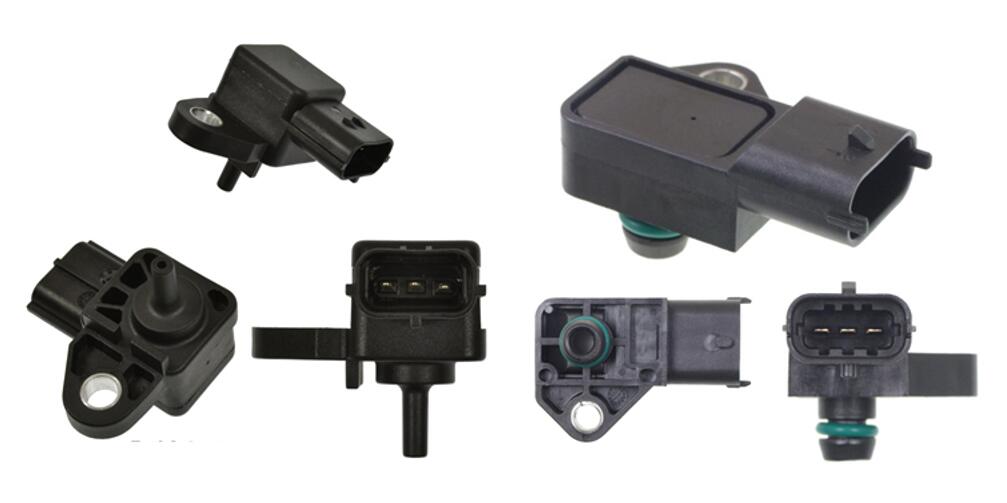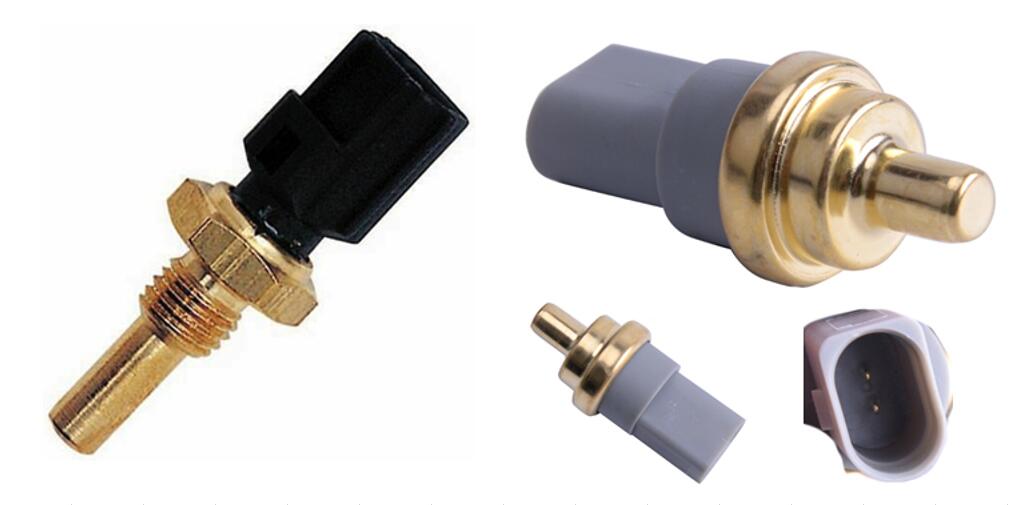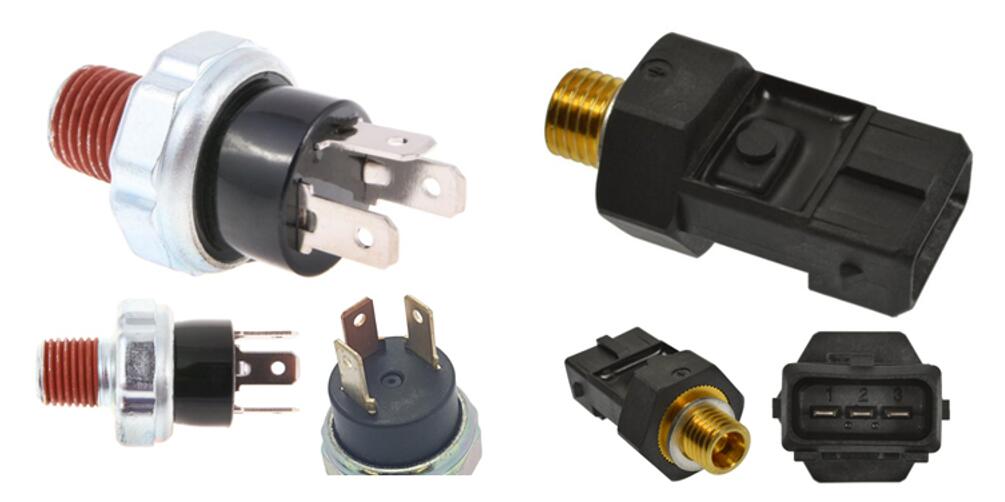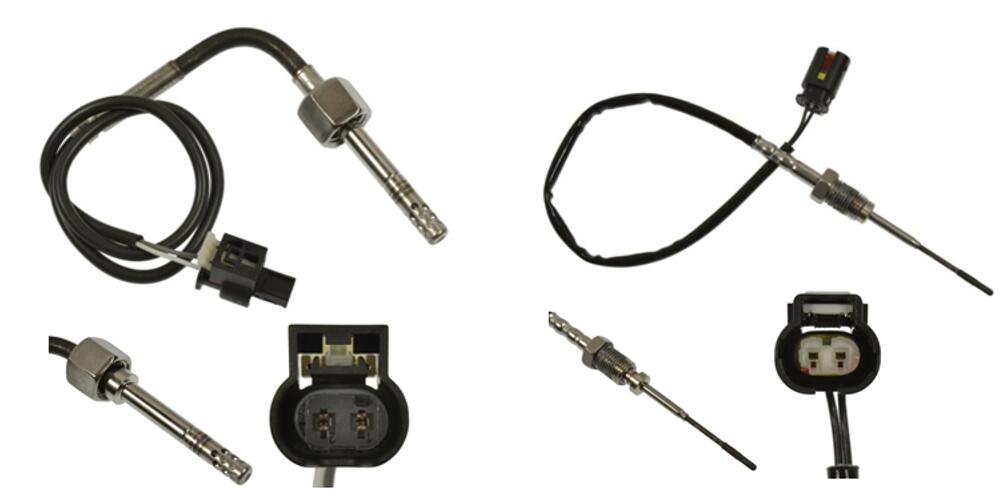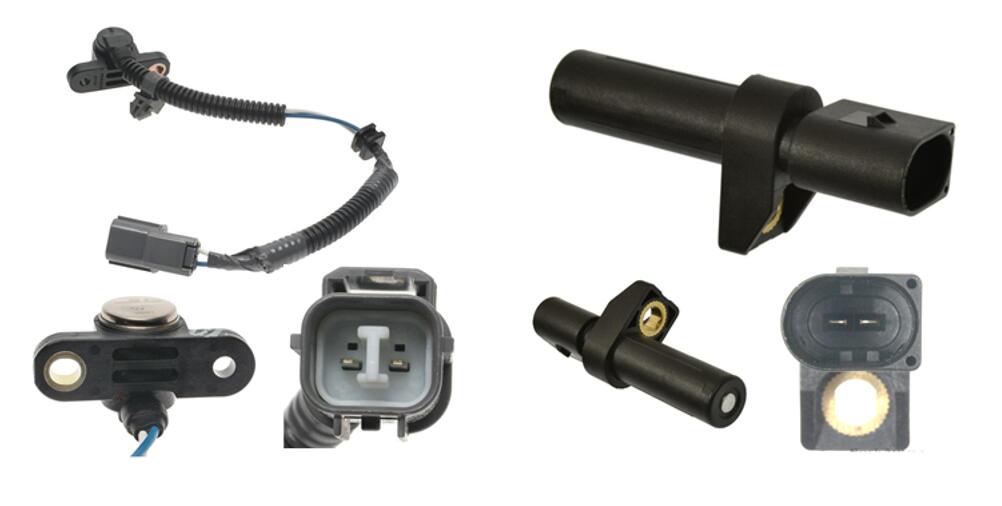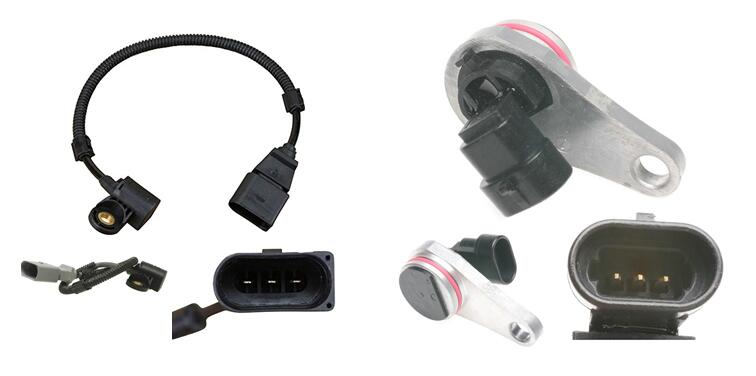
Nowadays, automobiles have become worldwide transportation facilities, but many people don't know how to deal with faulty car sensors. Sensors improve engine performance, reduce emissions, enhance driving comfort, improve safety and other benefits.
Engine sensors are vital to everyday driving, ensure that the vehicle is operating at peak efficiency. Here are some failure symptoms and testing of engine sensors.
1. Manifold absolute pressure sensor
(1) Turn the ignition switch to the 'ON' position, the check engine light stays on permanently.
(2) Small amount of black smoke exhaust when slowly stepping on the pedal, and large amount of black smoke exhaust when stepping on with fast acceleration.
(3) The engine is losing power.
(4) DTC: P01D6 (The MAP sensor voltage is lower than the floor level).
Analysis: The intake pressure signal is abnormal. The ECU can't receive the correct intake information, resulting in abnormal fuel injection. The combustion is not sufficient. The engine is losing power. Black smoke exhaust during the refueling. Wiring connection problems and sensor failure lead to the damage.
Solution: Check and replace the manifold absolute pressure sensor.
(1) Turn the ignition switch to the 'ON' position, the check engine light stays on permanently.
(2) The water temperature always shows a maximum value of 120 ℃.
(3) The engine is losing power.
(4) DTC: P003D (Water temperature sensor voltage is lower than the floor level).
Analysis: The water temperature sensor fails. The ECU detects that the sensor output signal is not credible and uses alternative features. The ECU limits the engine torque for protecting the engine.
Solution: Check and replace the water temperature sensor.
3. Oil pressure sensor
(1) Turn the ignition switch to the 'ON' position, the oil pressure indicator stays on permanently.
(2) The check engine light stays on permanently.
(3) The reading of the oil pressure is 0.99 when we leave the engine idling.
(4) DTC: P01CA (Oil pressure sensor voltage is higher than the superior limit).
Analysis: The oil pressure sensor probe is severely damaged. The ECU detects no connection to the oil pressure sensor. The meter number shows the ECU internal alternative one.
Solution: Check and replace the oil pressure sensor.
4. Short circuit in the nitrogen oxide sensor wiring harness
(1) The OBD light illuminates after turning the ignition switch to the 'ON' position.
(2) The engine is losing power.
(3) DTC: P0050 (Downstream sensor CAN signal reception timeout); P018C (Downstream sensor preparation timeout).
Analysis: The wire harness in the nitrogen oxide sensor wears out. There is a ground fault. The nitrogen oxide sensor can't work correctly. The emission is beyond the standard. The engine gets torque limitation. The alarm system activates.
Solution: Check and replace the wire harness of the nitrogen oxide sensor.
5. Open circuit in the urea dosing system
(1) The OBD light illuminates after turning the ignition switch to the 'ON' position.
(2) The engine is losing power. The engine gets torque limitation.
(3) DTC: P3006 (Open circuit in the urea dosing control system).
(4) No urea consumption.
Analysis: There is a short circuit in the urea pump control line. The urea pump doesn't work. The system can't typically eject the urea. The emission is beyond the standard. The engine gets torque limitation. The alarm system activates.
Solution: Check and replace the wiring harness terminal connector of the urea pump.
6. Error in the instrument bottom software
(1) A brief 1-2s drop down in engine dynamics when going uphill or in a fast acceleration.
(2) The software doesn't send speed signals.
(3) No diagnostic trouble code.
Analysis: During driving, the speed signal suddenly drops to 0. The change of the speed signal changes the oil control quantity of the ECU. Oil cut-off suddenly happens.
Solution: If the matching car part number is 3820010-61B, update it to the latest version: 3820010D61B.
7. Urea reflux tube obstruction in the SCR system
(1) The OBD light illuminates after turning the ignition switch to the 'ON' position.
(2) The engine is losing power. The engine gets torque limitation.
(3) DTC: P0207 (The urea reflux tube obstruction in the SCR system).
(4) No urea consumption.
Analysis: The urea reflux tube obstruction happens in the SCR system. The system can't correctly eject urea. The emission is beyond the standard. The engine gets torque limitation. The alarm system activates.
Solution: Check the urea reflux (Urea pipe between the urea pump and the urea tank).
8. Terminal socket of the urea reflux heating line connector
(1) The OBD light illuminates after turn the ignition switch to the 'ON' position.
(2) DTC: P0287 (Open circuit or ground fault in the wire between urea reflux heating line load terminal and the power supply).
Analysis: Unplug the urea reflux heating tube connector, find that the terminal contorts.
Solution: Repair the terminal and replug the connector.
For the best engine parts on the market at the lowest prices, welcome to browse through the Delcoribo range. We have parts for all makes and models. Take a look!
9. Open circuit in the urea pressure line
(1) The OBD light illuminates after turn the ignition switch to the 'ON' position.
(2) DTC: P028E (Open circuit or ground fault in the wire between the urea pressure line heating relay terminal and the power supply).
(3) In winter, the engine loses power. The engine gets torque limitation.
Analysis: An open circuit is in the heating wire of the urea pump pressure pipe. The urea heating is abnormal in winter. The alarm system activates.
Solution: Check the pressure tube of the urea pump (The urea line between the urea pump and the urea nozzle).
10. Open circuit in the urea reflux line
(1) The OBD light illuminates after turn the ignition switch to the 'ON' position.
(2) DTC: P0287 (Open circuit or ground fault in the wire between the urea reflux line heating relay terminal and the power supply).
(3) In winter, the engine loses power. The engine gets torque limitation.
Analysis: An open circuit is in the heating wire of the urea pump reflux line. The urea heating is abnormal in winter. The alarm system activates.
Solution: Check the urea pump reflux line (The urea line between the urea pump and the urea tank).
11. Open circuit in the EGT sensor wiring harness
(1) The OBD light illuminates after turn the ignition switch to the 'ON' position.
(2) The engine is losing power. The engine gets torque limitation.
(3) No consumption of urea.
(4) DTC: P027B (Too high the upstream temperature sensor signal voltage of the SCR catalytic converter).
Analysis: The wiring harness of the exhaust gas temperature sensor wears out, the ECU cannot obtain the upstream exhaust temperature of the SCR catalytic converter. The urea pump doesn't gain pressure. No urea consumes. The emission is beyond the standard. The engine loses power and gets torque limitation.
Solution: Repair the wiring harness and wrap it well.
12. Crankshaft position sensor in the wrong location
(1) maximum speed limits to 1800 rpm.
(2) Excessive start-up time.
(3) DTC: P00EF (No signal from crankshaft position sensor), P01E2 (Pressure relief valve opens).
Analysis: The crankshaft position sensor and the plug connector of the oil metering unit install reversely. Neither can provide a standard signal to the ECU.
Solution: Exchange the location of these two parts.
13. Normally-close in the urea tank antifreeze solenoid valve
(1) There are impurities in the antifreeze. Contaminants accumulate around the diaphragm. Pits generate on the diaphragm due to the debris, which breaks the seal.
(2) The operating pressure range of the solenoid valve doesn't match the actual pressure. (The range of working pressure is 20kPa ~ 250kPa. The real pipeline pressure may be lower than 20kPa. The diaphragm can't be compressed and effectively sealed).
(3) The urea tank temperature is high. The urea discharges from the urea tank vent plug.
Analysis: There is a customarily closed circuit in the antifreeze solenoid valve of the urea tank while the car is traveling. The antifreeze thaws for the urea box.
Solution: Change the solenoid valve assembly to the latest version according to the parts catalogue.
14. Motor speed deviation of the urea dosing system
(1) The OBD light illuminates after turn the ignition switch to the ‘ON’ position. No torque limitation.
(2) DTC: P02AB (permanent fault of the motor speed deviation in the urea dosing system).
Analysis: The urea pump motor damages.
Solution: Replace the old pump with BOSCH 2.2 urea pump 1161010-51B.
15. Crystallization at the urea nozzle boss
Uniform crystal at the urea nozzle boss, the middle spray hole is unblocked and ventilated.
Analysis: The urea nozzle boss has a local spin, resulting in a thin layer of urea crystal.
Solution: This is normal. No need for processing if it doesn't affect emissions.
16. Crystallisation at the rear processor's air inlet
Uniform crystal at the air inlet of the rear processor, no large pieces of crystallized urea.
Analysis: During the usage, a thin layer of urea crystal produces near the interface between the rear processor and the air inlet pipe.
Solution: This is normal. No need to deal with it if it doesn't affect emissions.
17. Urea nozzle head crystallization and obstruction
(1) The OBD light illuminates after turn the ignition switch to the 'ON' position.
(2) The engine is losing power. The engine gets torque limitation.
(3) No urea consumption.
(4) The urea nozzle head crystallized, and the spray hole clogged.
Analysis: The angle between the urea nozzle seat and the exhaust pipe doesn't conform to the design specification of the BOSCH engineering.
Solution: Replace a new exhaust pipe.
18. Camshaft position sensor plug-in unit
(1) The OBD light illuminates after turn the ignition switch to the 'ON' position. No torque limitation.
(2) The engine is difficult to start.
(3) DTC: P00EC (No camshaft signal).
Analysis:
(1) CAN B passive fault is a data problem. The code should be shielded.
(2) No camshaft signal causes the inability to determine the cylinder number accurately when starting. The engine is difficult to start.
Solution:
(1)For the P0032 fault, clear the code.
(2) For the P00EC fault, check the connector of the camshaft position sensor.
 Lauritz Carolsfeld
Lauritz Carolsfeld  June 17, 2021
June 17, 2021